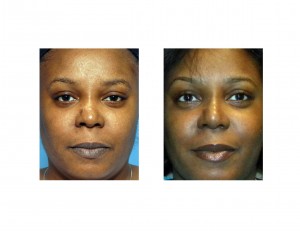Reconstruction of certain nasal deformities requires significant structural support. Despite the ease of use of synthetic implants, the use of cartilage is associated with minimal risk of severe implant problems such as infection or extrusion. In the very visible nose, this is a huge advantage. Infections and extrusions in the nose from foreign materials may end up destroying or distorting skin or internal lining, problems from which creating a normal looking nose may not be possible.
Adequate cartilage is the key to recovery from many rhinoplasty problems. The nasal septum and the ears can usually suffice. But problems such as saddle nose deformity, short nose problems, large nasal defects from tumor resections and multiply operated and scarred noses may require more than cartilage sites above the neck can provide. The final cartilage harvest stop is the ribs.
Use of a rib graft in rhinoplasty is also known as costal cartilage grafting. It requires a small incision on the chest wall based on the rib number which is to be used. Many plastic surgeons use the fifth or sixth rib for rhinoplasty but my preference is for lower level rib harvesting. Having substantial experience in microtia ear reconstruction, harvesting the free floater 9th rib and portions of ribs 7 and 8 is easier and provides plentiful options of shape and configurations. A small subcostal incision can be moved around to provide good visibiity and the underlying rectus muscle is split vertically for access rather than transecting it.
One of the major concerns about rib harvesting is the risk of pneumothorax as the lung pleura is close by underneath. But at the level of the 7th ribs and lower, the lower apex of the lung is higher so this is not going to happen. In over 65 cases of rib harvest at this chest wall level, the pleura has never been violated. It becomes evident at the level of the 7th and most certainly at the 6th rib.
But many cases of using rib graft material in the nose do not require a full-thickness graft harvest. A split-thickness graft can be easily and quickly harvested, sparing the bottom side of the rib. This can be very useful for smaller straight grafts of the columella, middle vault spreader grafts, and septal extension grafts. Doral augmentation grafts must usually be 3 to 4 cms. long.
One known risk of using rib grafts is warping. This has been an historic concern. With time, rib segments can change shape and warp. This is particularly prone to occur if one tries to shape a curved piece into a straight graft. It is far better to harvest enough of a segment that you do not have to try and change its natural shape.

Dr. Barry Eppley
Indianapolis Indiana


